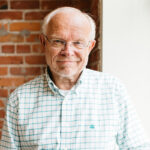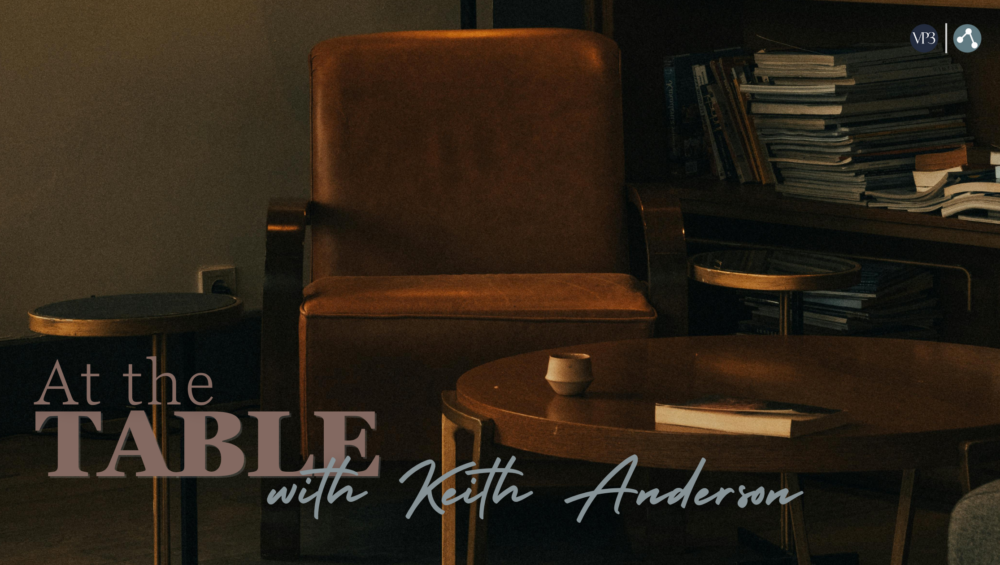I’ve been to Jerusalem where I saw what some traditions believe was the place of Jesus’ birth and nearby to where they think he was buried. Lots of gold, jewels, silver, and a certain kind of beauty. But I’ve also seen places “off the beaten path” where others imagined birth and burial: I am moved by those places. No gold, jewels, silver, or “glory,” just terra firma under our feet. We know the stable pictures of the Nativity and we can imagine a huge round stone in front of a cave-like tomb on Good Friday and Easter Sunday.
At a graveside, the view is always downward, earthward, looking back to what was. Death is always a memory of the past with only a hesitant glance toward what lies ahead. It always feels like loss, sorrow, and a return, perhaps to an empty house and seat at the kitchen table.
But this death asks for a new imagination—empty, yes, but this tomb was empty of the very One just crucified in a violent act of political reprisal. Empty but not vacant; this tomb is unoccupied, uninhabited, but full, in a profound sense of new life, new presence, new hope, simply put in a single word, resurrection.
Emptiness as fullness
To see emptiness as fullness is an act of a fiercely held trust that the man knew what he was talking about when he said, “I am the resurrection and the Life.”
To see emptiness as fullness demands that you look down this time, instead of up.
I remember the Ascension scene painted on the Brainerd Corp, Salvation Army church on the south side of Chicago. My eyes were trained to look up every Sunday, I suppose, because that was where God would be—in the heavens, up, on high, far off and distant. But on Good Friday and Saturday, no one looked up, only down… at the place of death, burial, a grave.
When the light moved
Let us revisit these thoughts from last month’s blog yet again. At two epic moments in human history, humankind looked in the wrong direction. At Jesus’ birth, the light was in the heavens in Bethlehem, true, but the one who later called himself “the light of the world” was down in a feeding trough, not up in the clouds. And at Jesus’ death, the light of the world was down until he was raised up on Easter Sunday morning when the light moved once again.
We all look for light, so we tend to look up, but this Jesus came down to show us the light. Incarnation recognizes that Jesus needed both the manger and the grave to hold his humanness but his light was unable to be contained: it was luminous as it spread by women and men who reflected the light of an ever-living and ever-present Light of the world. While you raise your hands in worship and your eyes to praise this One, look for the light in the eyes of everyone at your kitchen table, at your work table, in your neighborhood and beyond: “the light (has) moved. It (is) coming from below, not above.”[1] Open your eyes and look here, “down” on this earth where Jesus himself walked among us… as he does in what we call “the body of Christ.”
Practice: Read this Easter Day, John 20: 11 -18, one disciple’s experience of that first Resurrection Sunday. Then sink into Jan Richardson’s beautiful poem/blessing. Allow your thoughts and feelings to be converted into a prayer to and with this living Jesus, who calls us by name.
“The Magdalene’s Blessing”
For Easter Day
by Jan Richardson (www.janrichardson.com)
You hardly imagined
standing here,
everything you ever loved
suddenly returned to you,
looking you in the eye
and calling your name.
And now
you do not know
how to abide this hole
in the center
of your chest,
where a door
slams shut
and swings open
at the same time,
turning on the hinge
of your aching
and hopeful heart.
I tell you,
this is not a banishment
from the garden.
This is an invitation,
a choice,
a threshold,
a gate.
This is your life
calling to you
from a place
you could never
have dreamed,
but now that you
have glimpsed its edge,
you cannot imagine
choosing any other way.
So let the tears come
as anointing,
as consecration,
and then
let them go.
Let this blessing
gather itself around you.
Let it give you
what you will need
for this journey.
You will not remember
the words—
they do not matter.
All you need to remember
is how it sounded
when you stood
in the place of death
and heard the living
call your name. [2]
_________________________________

Keith Anderson, D.Min., is a Faculty Associate for Spirituality and Vocation at VantagePoint3 and President Emeritus of Seattle School of Theology and Psychology and is the author of several books, including Reading Your Life’s Story (IVP, 2016), A Spirituality of Listening (IVP, 2016), and Spiritual Mentoring (IVP, 1999). Keith’s newest book, On Holy Ground: Your Story of Identity, Belonging and Sacred Purpose, will soon be released from Wipf & Stock Publishers. In his writing, teaching, and mentoring, Keith seeks to set a table for people looking to enter the “amazing inner sanctuary of the soul” in the most ordinary and extraordinary moments of life.
[1] Barbara Brown Taylor, “When the Divine Came Down”, 12/24/24, https://barbarabrowntaylor.substack.com/p/when-the-divine-came-down
[2]Jan Richardson, Circle of Grace: A Book of Blessings for the Seasons (Wanton Gospeller Press, 2015), pp. 156-158.

